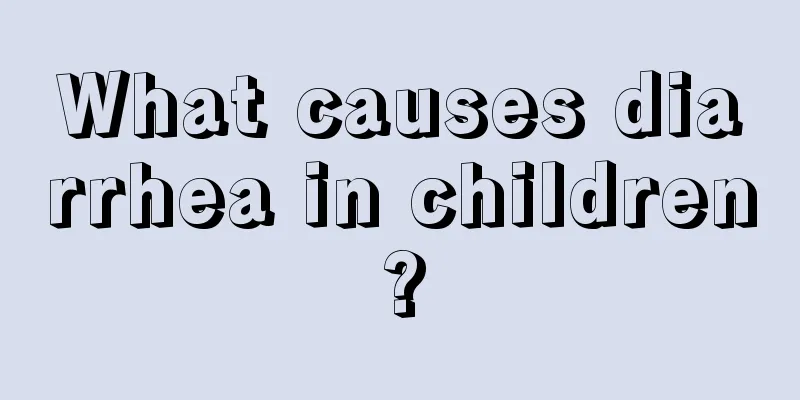What are the precautions for the high incidence of hand, foot and mouth disease in summer?

|
It is generally believed that spring is drier and various infectious diseases are more easily spread, so people are generally more vigilant at this time. But do you know? There are also many infectious diseases that are easily spread in summer, such as hand, foot and mouth disease, which makes many mothers shudder. So what are the precautions for hand, foot and mouth disease, which is prevalent in summer? In summer, which is the peak season for hand, foot and mouth disease, mothers should pay special attention to protecting their babies. Hand, foot and mouth disease was previously mainly caused by Coxsackievirus A16 and enterovirus 71, which is a viral infection. It has three transmission routes: one is through droplets of air and the upper respiratory tract; the other is fecal-oral transmission, which is mainly through contact with things that have herpes fluid. If a baby eats food or water contaminated with herpes fluid, it may cause hand, foot and mouth disease. The other way is direct contact transmission. If the baby's hands directly touch toys contaminated by herpes fluid, he or she may also get hand, foot and mouth disease. In summer, the weather is hot and rainy, and many bacteria multiply rapidly. To prevent hand, foot and mouth disease, you should wash your hands frequently, ventilate more, dry your bedding in time, etc. If hand, foot and mouth disease is discovered early and treated promptly, there should be no major problems. If it is not treated promptly, there may be some more serious complications, such as myocarditis, encephalitis, pneumonia, etc. Hand, foot and mouth disease seems to be a trivial matter, so many people do not pay much attention to it. However, if not treated in time, hand, foot and mouth disease can cause many complications and can take the baby's life in minutes! Everyone should be vigilant! Hand, foot and mouth disease is an infectious disease caused by enterovirus. It is more common in babies under 5 years old and can cause herpes on the hands, feet, mouth and other parts of the body. A small number of children may develop complications such as myocarditis and pulmonary edema. The main route of transmission is through close contact. The virus in the patient's throat secretions and saliva can be transmitted through air droplets. The virus can be transmitted through daily contact with saliva, hands contaminated with feces, towels, cups, toys, eating utensils, milk containers, bedding, underwear, etc., and can also be transmitted orally. The harm of hand, foot and mouth disease to babies varies in severity. The milder ones include prodromal symptoms such as low fever, general discomfort, and abdominal pain. Scattered painful, millet- to mung-bean-sized blisters appear on the oral mucosa, and maculopapules and herpes appear on the hands and feet. Initially, they are maculopapules, which later turn into herpes. They are round or oval, about 3-7 mm in size, like the size of a grain of rice, smaller than the chickenpox rash, harder in texture, with a red halo around it, and less fluid in the blisters. Dot-like or flaky erosions can be seen under the grayish-white membrane. After the rash subsides, no scars or pigmentation are left. If there is a secondary infection, the skin damage will often be aggravated. More serious hand, foot and mouth disease can cause some complications, such as encephalitis, encephalomyelitis, meningitis, pulmonary edema, circulatory failure, etc. Shallow and difficult breathing, changes in respiratory rhythm, and cyanosis of the lips. Poor spirit, drowsiness, headache, vomiting, easy to be frightened, limb shaking, weakness or paralysis, pale complexion, increased or slow heart rate, shallow and rapid pulse, weakened or even disappeared pulse, cold limbs, cyanosis of fingers (toes), increased or decreased blood pressure, etc. Hand, foot and mouth disease is prevalent in summer, so parents should take extra care to protect their babies. If you have babies at home, you should try to reduce going to public places. You should also help your babies maintain good personal hygiene, bathe and wash hands frequently, pay attention to home disinfection, get vaccinated regularly, and strive to improve their own immunity. When the weather is good, you can also bring your baby to breathe fresh air and exercise. |
<<: What are the treatment, diagnosis and prevention of albinism in children?
>>: Symptoms of albinism in children
Recommend
What should I do if my child has a runny nose?
Children are the group most likely to have a runn...
What toothbrush is good for children?
Washing our face and brushing our teeth are thing...
Introduce the reasons why babies have trouble sleeping
Here are some reasons why your baby may not sleep...
What should I do if my child has a swollen throat?
People are prone to getting a sore throat and inf...
Hard lumps on children's feet
Adults will develop many lumps on the soles of th...
Is sunbathing useful for eczema?
Everyone knows that there are many skin diseases,...
What is the reason for the yellow palms of children?
The health of children can be manifested in many ...
How long is the standard sleep time for a 3-year-old baby?
Sleep is a very important behavior for the human ...
There is also a good way to treat children's foreskin being too long
After a child is born, parents should take the ch...
Are active children smart?
Different people will show different personality ...
How to treat a child with a high fever of 39 degrees?
Many children have high fever problems, which ser...
What are some recipes for home-cooked meals for young children?
In our lives, whether babies can eat healthily is...
What to do if your child has tonsillitis
Tonsillitis is most likely to occur in children. ...
Is it normal for children to shed tears when they have a cold?
Cold is a common disease in winter. This kind of ...
What is the reason why my baby has a fever and hot hands and feet?
Young babies have low disease resistance because ...









